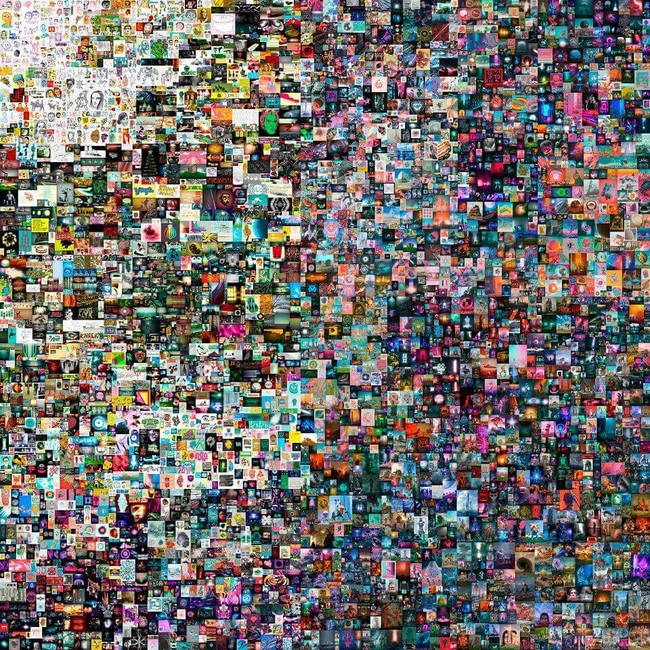How do artists use the NFTs? Art tokenization


NFT tokens have been by far the hottest trend in the financial world in recent months. This is thanks to artists who have decided to tokenize their art and investors who can support their favourite painter, or musician in a completely different way.
NFT: Everything can be tokenized
If you are reading this, you have probably come across terms like “NFT token” or “art tokenization” before. Today, we’d like to explain what tokenized art investments are all about, who tokenization is for, and how it can be done.
NFT is an acronym that comes from “non-fungible token”, meaning a non-exchangeable token. It is a digital asset that works similarly to cryptocurrencies. This type of tool is also created on the blockchain and, like e.g., Bitcoin, represents some value in the digital world.
However, there are many differences between NFT and cryptocurrencies. The most important of them is that the exchangeable tokens can be exchanged for others of the same value. By contrast, the NFTs are unique. This means that each token of this type cannot be exchanged 1:1 for another. While digital currencies operate similarly to conventional money, NFT tokens basically act as digital certificates of ownership (e.g. of works of art) embedded in blockchain technology.
Of course, the non-fungible token can be sold or exchanged for others. There are already markets where trades can be made.
The uniqueness makes NFT tokens so desirable. This feature revolutionizes the way we look at art. So far, we have been able to search the Internet for a well-known work, like Mona Lisa, print it and hang it on the wall. We could then say we had the Mona Lisa. However, it is well known that the Mona Lisa belongs to the French government and hangs in the Louvre. In the case of NFT, you can usually take a screenshot and print it, but only a selected group (or even just one person) can actually own this art thanks to tokens.
What’s more, thanks to the use of blockchain technology, the certificates of works’ authenticity are unforgettable, and such virtual documents cannot be counterfeited.
A revolution in art
The history of NFT tokens dates back to 2012. Back then, the Bitcoin development team tried to investigate whether the first cryptocurrency could be used as a representative of a specific value (e.g. securities, collectibles, votes). It quickly turned out that the BTC blockchain is not the best fit for this, whilst established in 2015 the Ethereum blockchain is much better adapted to it. While Bitcoin was designed to build a cryptocurrency, the Ethereum chain of blocks was meant to be much more versatile. In addition, transactions on this network are faster and require less energy. This is why the Ethereum blockchain has become the primary infrastructure used for the vast majority of smart contracts, decentralized applications, and non-exchangeable tokens.
The creator of the first NFT token is considered to be Kevin McCoy, who on May 3, 2014, issued “Quantum” - a pixel image of an octagon filled with various geometric shapes with the same center. Today this token can be purchased for $7 million. McCoy and his wife Jennifer consider themselves to be the first blockchain artists.
The turning point was CryptoKitties, which are known as the first global NFT tokens. It is a game based on blockchain technology, where you can own virtual cats, combine them in pairs, and breed. Each of them is in its own way unique and is also an NFT.
The popularity of this game was so significant that the Ethereum network struggled with a very high transaction load for some time, which in turn caused large delays in transfers and an increase in transaction costs. CryptoKitties made NFTs known to the general public. The creators soon came to the conclusion that this could be a great solution for art tokenization. A real boom for non-fungible tokens, however, took place at the beginning of 2021.
How to create and sell pieces of art on blockchain
Anyone, from artists, entrepreneurs, filmmakers, celebrities, to “average Joe” can create NFT tokens and earn money by investing in art.
Various websites offering NFT creators are used for this. You can create the so-called “single” - a singular, unique token and “multiple” - intended for artists who want to sell art multiple times (then the owners will be a group of people). The most popular application for creating NFT tokens is OpenSea. Rarible, Mintable, SuperRare, and KnowOrigin also have a large number of users.
If we have already created our own creation, we can try to sell it. The vast majority of platforms where you can create your digital work also offer the option of listing it for sale. Of course, placing NFT on the market is not free. You have to pay fees for the execution of transactions on the network (at the peak of the blockchain load, this amount can be as high as about $250).
How to buy NFT? An investment in art
There are many markets where you can buy NFT tokens. The most popular platforms where you can invest in blockchain art are listed above. Each of the most popular sites where you can sell NFT tokens also offers the option to buy created works.
Since the vast majority of tokenized art transactions take place on the Ethereum blockchain, you will need the cryptocurrency Ether (ETH) and a crypto wallet (it’s best to use MetaMask wallet, which can work as a Chrome extension or mobile app) to make purchases.
Once you have a wallet, funds, and an account on one of the platforms offering NFT tokens, you can enter the market and find the work that interests you. The vast majority of digital art sites operate in an auction format, so you will have to outbid others. Once you’ve done this, you can keep the artwork for yourself, but you can also issue your certificate on the secondary market for a higher price and try to make a profit by investing in art.
Artists, money and tokens
The NFT market, although still not known to everyone, attracts a lot of money. Only in the record-breaking March 2021, over 509,000 works of art were sold for a total amount of over 85 million dollars.
No wonder then that more celebrities decide to create their own non-fungible tokens. In Poland, the influencer Marta Rentel (known as martirenti) gained wider recognition because she decided to sell “digital love”. The right to her emotions in a virtual form was sold for 250 thousand dollars.
This financial result, although it may be impressive, has nothing to do with the world record holder. Beeple, an American digital artist, sold his collage of 5,000 works called “Everydays: The First 5000 Days” in the form of NFT. The buyer paid $69 million for the tokenization of the art. Never, before October 2020, had Beeple sold a piece of art for more than $100.

So far, many artists have tried their strength in selling NFT tokens, among others Steve Aoki, Shakira, Grimes, and Jack Dorsey. However, this is just the beginning, because the trend for owning an NFT among celebrities is just beginning.
Hidden potential
Sceptics of non-exchangeable tokens call the new fashion a simple bubble. The very concept of buying something that can be found for free online seems a bit absurd. However, the money that is invested in this industry shows that NFTs are something quite serious.
If it’s a bubble, the digital artists who have been creating their content for years and giving it to the tech giants for almost free will not give up (because it’s also hard to pay rent for likes).
However, tokenization of art still has several problems that must be solved before it becomes a fully-fledged branch of art treated on an equal footing with others. First, the entry threshold: quite high costs and the requirement of at least basic knowledge of the technology can be an insurmountable barrier for some artists. Lawmakers around the world are also wondering how to combine NFT tokens with existing copyrights. In addition, there are concerns that this type of artwork costs a lot of electricity to produce, which can be very harmful to the environment. This is currently true for Ethereum, however the blockchain world is striving for greener solutions.
NFT: a temporary fashion or a permanent trend?
The future of NFT tokens is a question. Perhaps it is just a short-lived fad that will soon pass. But if digital creators want investments in online art to become credible and last longer, the industry will have to go through a series of changes.
If all the problems and challenges are overcome, perhaps we can call 2021 the beginning of a whole new era in the history of art.

